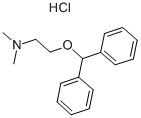STAUROSPORINE
Synonym(s):Staurosporine;Staurosporine from Streptomyces sp.;InSolution Staurosporine, Streptomyces sp.;PKA Inhibitor II, MLCK Inhibitor I;PKC inhibitor
- CAS NO.:62996-74-1
- Empirical Formula: C28H26N4O3
- Molecular Weight: 466.54
- MDL number: MFCD18252446
- EINECS: 613-127-7
- SAFETY DATA SHEET (SDS)
- Update Date: 2024-11-19 20:33:22

What is STAUROSPORINE?
Description
Staurosporine (Stsp) is potent inhibitor of protein kinase C (PKC) from rat brain, exhibiting an IC50 value of 2.7 nM. It inhibits rat recombinant PKC-
Chemical properties
Light Yellow Solid
Occurrence
A complex alkaloid. staurosporine has been isolated from a strain of Streptomyces.
The Uses of STAUROSPORINE
Staurosporine is an unusual indolocarbazole alkaloid produced by a range of actinomycete species. It is a potent antitumour active, inducing apoptosis in a variety of cell lines. Staurosporine is a potent inhibitor of many kinases including protein kinase C, tyrosine kinase, CDK2/cyclin A and CDK4/cyclin D. At submicromolar concentrations, staurosporine inhibits both IKKalpha and IKKbeta.
The Uses of STAUROSPORINE
Staurosporine is a protein Kinase C inhibitor that induces apoptosis in many cell types.
What are the applications of Application
Staurosporine is an antifungal inhibitor of many different kinases via interaction with the ATP binding site
What are the applications of Application
Staurosporine Solution in Ethyl Acetate is An ATP-competitive protein kinase inhibitor
Definition
ChEBI: Staurosporine is an indolocarbazole alkaloid and an organic heterooctacyclic compound. It has a role as an EC 2.7.11.13 (protein kinase C) inhibitor, a geroprotector, a bacterial metabolite and an apoptosis inducer. It is a conjugate base of a staurosporinium.
General Description
A potent, cell-permeable, reversible, ATP-competitive and broad spectrum inhibitor of protein kinases. Inhibits CaM kinase (IC50 = 20 nM), myosin light chain kinase (IC50 = 1.3 nM), protein kinase A (IC50 = 7 nM), protein kinase C (IC50 = 0.7 nM), and protein kinase G (IC50 = 8.5 nM). Also inhibits platelet aggregation induced by collagen or ADP but has no effect on thrombin-induced platelet aggregation. Induces apoptosis in human malignant glioma cell lines. Arrests normal cells at the G1 checkpoint.
Biological Activity
Broad spectrum protein kinase inhibitor. Enzymes inhibited include protein kinase C (IC 50 = 3 nM), protein kinase A (IC 50 = 7 nM), p 60v-src tyrosine protein kinase (IC 50 = 6 nM) and CaM kinase II (IC 50 = 20 nM). Also available as part of the Mixed Kinase Inhibitor Tocriset™ .
Biochem/physiol Actions
Reversible: yes
storage
+4°C
References
1) Omura et al. (1977) A new alkaloid AM-2282 of Streptomyces origin taxonomy, fermentation, isolation and preliminary characterization; J. Antibiot., 30 275 2) Ruegg and Burgess (1989) Staurosporine, K-252 and UCN-01: potent but nonspecific inhibitors of protein kinases; Trends in Pharmacological Science 10 218
Properties of STAUROSPORINE
| Melting point: | 270°C |
| Boiling point: | 677.5±55.0 °C(Predicted) |
| alpha | D25 +35.0° (c = 1 in methanol); D22 +56.1° (c = 0.14 in methanol) |
| Density | 1.56±0.1 g/cm3(Predicted) |
| RTECS | KD5084000 |
| storage temp. | 2-8°C |
| solubility | DMSO: soluble |
| form | White to pale yellow solid |
| pka | 14.25±0.70(Predicted) |
| color | Off white to pale yellow |
| Water Solubility | Soluble in DMSO or ethanol.Soluble in dimethyl sulfoxide , dimethyl formamide, ethyl acetate, hot acetone and ethanol. Slightly soluble in chloroform and methanol. Insoluble in water. |
| BRN | 1060573 |
| Stability: | Stable for 1 year from date of purchase as supplied. Solutions in DMSO may be stored at -20° for up to 4 months. |
| CAS DataBase Reference | 62996-74-1 |
Safety information for STAUROSPORINE
| Signal word | Warning |
| Pictogram(s) |
 Health Hazard GHS08 |
| GHS Hazard Statements |
H413:Hazardous to the aquatic environment, long-term hazard |
| Precautionary Statement Codes |
P201:Obtain special instructions before use. P202:Do not handle until all safety precautions have been read and understood. P273:Avoid release to the environment. P280:Wear protective gloves/protective clothing/eye protection/face protection. P308+P313:IF exposed or concerned: Get medical advice/attention. P405:Store locked up. |
Computed Descriptors for STAUROSPORINE
| InChIKey | HKSZLNNOFSGOKW-WIFUGMKFSA-N |
STAUROSPORINE manufacturer
New Products
Tert-butyl bis(2-chloroethyl)carbamate 4-Methylphenylacetic acid N-Boc-D-alaninol N-BOC-D/L-ALANINOL N-octanoyl benzotriazole 3-Morpholino-1-(4-nitrophenyl)-5,6-dihydropyridin- 2(1H)-one Furan-2,5-Dicarboxylic Acid DIETHYL AMINOMALONATE HYDROCHLORIDE 1,1’-CARBONYLDIIMIDAZOLE R-2-BENZYLOXY PROPIONIC ACID 1,1’-CARBONYLDI (1,2-4 TRIAZOLE) N-METHYL INDAZOLE-3-CARBOXYLIC ACID (2-Hydroxyphenyl)acetonitrile 4-Bromopyrazole 5-BROMO-2CYANO PYRIDINE 5,6-Dimethoxyindanone 5-broMo-2-chloro-N-cyclopentylpyriMidin-4-aMine 2-(Cyanocyclohexyl)acetic acid 4-methoxy-3,5-dinitropyridine 1-(4-(aminomethyl)benzyl)urea hydrochloride 2-aminopropyl benzoate hydrochloride diethyl 2-(2-((tertbutoxycarbonyl)amino) ethyl)malonate tert-butyl 4- (ureidomethyl)benzylcarbamate Ethyl-2-chloro((4-methoxyphenyl)hydrazono)acetateRelated products of tetrahydrofuran








You may like
-
 Staurosporine 99.00% CAS 62996-74-1View Details
Staurosporine 99.00% CAS 62996-74-1View Details
62996-74-1 -
 Staurosporine, Streptomyces sp. CAS 62996-74-1View Details
Staurosporine, Streptomyces sp. CAS 62996-74-1View Details
62996-74-1 -
 Staurosporine, Streptomyces sp. CAS 62996-74-1View Details
Staurosporine, Streptomyces sp. CAS 62996-74-1View Details
62996-74-1 -
 Staurosporine CAS 62996-74-1View Details
Staurosporine CAS 62996-74-1View Details
62996-74-1 -
 Staurosporine from Streptomyces sp. CAS 62996-74-1View Details
Staurosporine from Streptomyces sp. CAS 62996-74-1View Details
62996-74-1 -
 Staurosporine from Streptomyces sp. CAS 62996-74-1View Details
Staurosporine from Streptomyces sp. CAS 62996-74-1View Details
62996-74-1 -
 Staurosporine CASView Details
Staurosporine CASView Details -
 733039-20-8 5-broMo-2-chloro-N-cyclopentylpyriMidin-4-aMine 98+View Details
733039-20-8 5-broMo-2-chloro-N-cyclopentylpyriMidin-4-aMine 98+View Details
733039-20-8